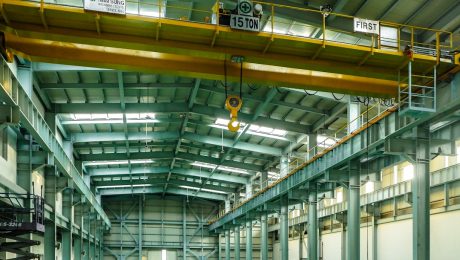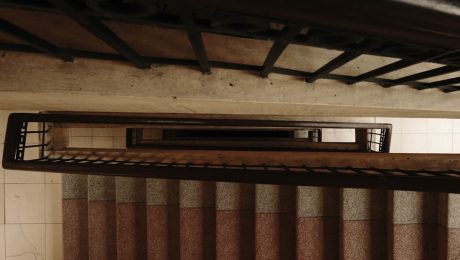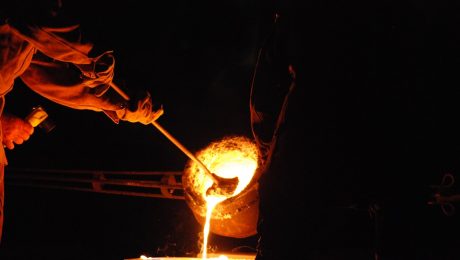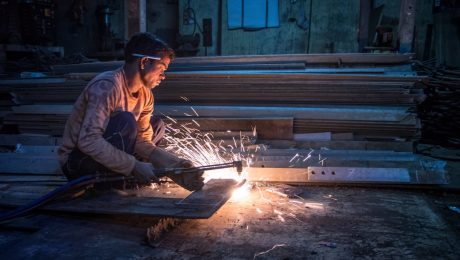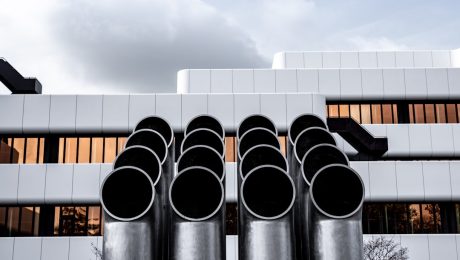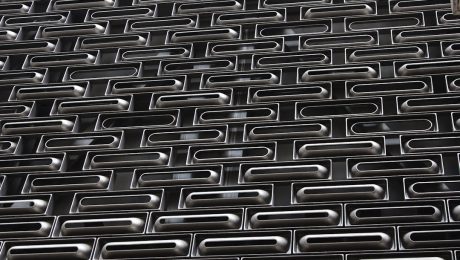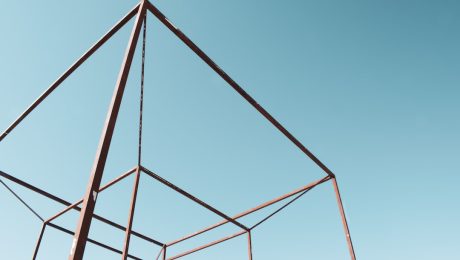body {
font-family: sans-serif;
line-height: 1.6;
}
h1, h2, h3 {
color: #333;
}
h1 {
font-size: 2.5em;
}
h2 {
font-size: 2em;
}
h3 {
font-size: 1.5em;
}
The European Union’s CE marking is a mandatory conformity assessment marking for many products sold within the European Economic Area (EEA). For steel products, obtaining CE certification signifies compliance with relevant EU directives and regulations, ensuring safety, health, and environmental protection. This comprehensive guide will navigate you through the complexities of CE certification for steel, explaining the process, requirements, and benefits.
Understanding the CE Marking for Steel
The CE marking isn’t a quality mark; it’s a declaration by the manufacturer that their steel product conforms to all applicable EU legislation. This means the steel meets specific requirements regarding its mechanical properties, chemical composition, and manufacturing processes. For steel, this often involves adherence to harmonized standards (EN standards) that are referenced within the relevant directives. Failure to comply can lead to significant penalties, including product seizure and hefty fines.
The specific directives relevant to steel will vary depending on the intended application of the product. For example, structural steel used in construction will fall under different directives than steel used in pressure equipment or medical devices. Identifying the correct directives is the crucial first step in the certification process.
Key Directives and Harmonized Standards for Steel CE Certification
Several directives play a crucial role in determining the CE certification requirements for steel. These include, but are not limited to:
- Construction Products Regulation (CPR) (Regulation (EU) No 305/2011): This regulation governs the placing on the market of construction products, including steel used in buildings and infrastructure.
- Pressure Equipment Directive (PED) (2014/68/EU): This directive covers pressure vessels, piping, and other equipment operating under pressure, often involving steel components.
- Machinery Directive (2006/42/EC): This directive applies to machinery incorporating steel components, ensuring their safety and proper functioning.
Each directive references specific harmonized European standards (EN standards). These standards detail the technical specifications that steel products must meet to achieve CE conformity. Compliance with these standards provides a presumption of conformity with the relevant directive.
The CE Certification Process: A Step-by-Step Guide
The CE certification process generally involves the following steps:
- Identify Applicable Directives and Standards: Determine which EU directives and harmonized standards apply to your specific steel product.
- Design and Manufacturing: Ensure your design and manufacturing processes comply with the identified standards.
- Internal Production Control: Implement a robust quality management system to monitor and control the production process and ensure consistent compliance.
- Conformity Assessment: Choose a suitable conformity assessment procedure, which may involve internal production control, type examination, or a combination of methods. This may require the involvement of a Notified Body (NB).
- Technical File Compilation: Prepare a comprehensive technical file documenting the design, manufacturing process, test results, and conformity assessment procedures.
- CE Marking and Declaration of Conformity: Affix the CE marking to the product and issue a Declaration of Conformity (DoC) that confirms compliance with all relevant regulations.
The Role of Notified Bodies in Steel CE Certification
Notified Bodies (NBs) are independent organizations designated by EU member states to assess the conformity of products with EU legislation. Depending on the chosen conformity assessment procedure, an NB may be required to review the technical file, conduct factory inspections, or perform product testing. The involvement of an NB adds credibility to the CE marking and demonstrates a higher level of assurance to customers.
Selecting a reputable and accredited NB is crucial. The NB should be competent in assessing steel products and familiar with the relevant directives and standards. Their involvement ensures an objective and impartial evaluation of the conformity of your steel product.
Benefits of CE Certification for Steel Products
Obtaining CE certification offers numerous benefits:
- Access to the EEA Market: CE marking is mandatory for many steel products sold within the EEA, making it essential for market access.
- Enhanced Customer Confidence: The CE marking reassures customers that the product meets high safety and quality standards.
- Improved Brand Reputation: CE certification enhances brand reputation and trust among customers and stakeholders.
- Reduced Legal Risks: Compliance with EU regulations reduces the risk of penalties, product recalls, and legal disputes.
- Increased Competitiveness: CE certification can provide a competitive advantage in the marketplace.
Navigating the complexities of CE certification for steel products can be challenging. However, understanding the process, directives, and standards involved is crucial for ensuring compliance and accessing the vast European market. Thorough preparation and potentially engaging with an experienced Notified Body can significantly ease the process and ensure a successful outcome.
Tags: CE marking, steel certification, EU directives, harmonized standards, Notified Body, construction steel, pressure equipment steel
In today’s increasingly noisy world, the need for quiet spaces is paramount. Whether you’re a musician needing a pristine recording environment, an industrial facility requiring noise control, or an individual seeking a sanctuary from urban clamor, sound-insulated steel rooms offer a robust and effective solution. This comprehensive guide explores the intricacies of these specialized spaces, from their construction and benefits to cost considerations and choosing the right provider.
The Science Behind Sound Insulation in Steel Rooms
Steel, while often associated with industrial environments, possesses excellent properties for sound insulation when properly engineered. Its inherent density and stiffness effectively block the transmission of airborne sound waves. However, simply building a steel room isn’t enough. Effective sound insulation relies on a multi-layered approach. This involves strategically incorporating sound-dampening materials within the steel structure. These materials, such as mineral wool, acoustic foam, and resilient channels, absorb and dissipate sound energy, significantly reducing noise transmission. The design also considers flanking paths – alternative routes sound can take to bypass the primary insulation. Careful attention to sealing gaps and seams is crucial to minimize these pathways and achieve optimal sound isolation.
Applications of Sound-Insulated Steel Rooms: Beyond the Studio
While recording studios and music rehearsal spaces are common applications, the versatility of sound-insulated steel rooms extends far beyond. Industrial settings frequently utilize these rooms to contain noisy machinery, protecting workers from hearing damage and improving overall workplace safety. They are also increasingly employed in medical facilities for MRI machines and other noise-generating equipment. Furthermore, sound-insulated steel rooms are finding their niche in educational settings for language labs and quiet study areas, providing students with focused learning environments. Even residential applications are emerging, with some homeowners incorporating soundproof steel rooms for home theaters or dedicated workspaces.
Construction and Design Considerations for Optimal Sound Insulation
The construction of a sound-insulated steel room is a precise process requiring specialized expertise. The foundation is critical; it needs to be decoupled from the surrounding structure to prevent sound vibrations from traveling through the floor. The steel framing itself plays a vital role. The use of double-walled construction, with a significant air gap filled with sound-absorbing material between the walls, is standard practice. Doors and windows are particularly vulnerable points; hence, specialized soundproof doors and impact-resistant glazing are essential. Proper sealing around all penetrations, including electrical conduits and ventilation ducts, is paramount to prevent sound leakage. The overall design needs to consider the specific noise reduction requirements and the intended use of the room.
Cost Factors and Budgeting for Your Sound-Insulated Steel Room
The cost of a sound-insulated steel room varies significantly depending on several factors. The size of the room is a primary determinant, with larger rooms naturally costing more. The level of sound insulation required also influences the cost; higher levels of noise reduction necessitate more sophisticated materials and construction techniques. The choice of finishes and interior features, such as lighting and ventilation systems, will also add to the overall expense. It’s crucial to obtain detailed quotes from multiple reputable providers, comparing not only the initial cost but also ongoing maintenance and potential warranty considerations. Remember to factor in site preparation, installation, and any necessary permits. While the initial investment might seem substantial, the long-term benefits in terms of productivity, health, and peace of mind often outweigh the costs.
Choosing the Right Provider for Your Sound-Insulated Steel Room Project
Selecting the right provider is crucial for a successful project. Look for companies with proven experience in designing and constructing sound-insulated steel rooms. Check their credentials, testimonials, and portfolio of completed projects. Inquire about their expertise in different types of sound insulation materials and techniques. A reputable provider will offer comprehensive consultations, helping you determine the optimal design and specifications for your specific needs. They should also provide clear and detailed quotes, outlining all costs and timelines. Don’t hesitate to ask questions and ensure you fully understand the construction process and warranty terms. Choosing a reputable provider will ensure the quality and longevity of your sound-insulated steel room.
Sound-insulated steel rooms represent a significant investment, but the benefits they offer in terms of noise reduction, productivity, and improved quality of life are undeniable. By carefully considering the factors outlined above, you can confidently create a quiet oasis tailored to your specific needs.
The steel industry, a cornerstone of global infrastructure and manufacturing, is undergoing a period of unprecedented transformation. Driven by the relentless pursuit of improved performance, sustainability, and cost-effectiveness, Research and Development (R&D) plays a pivotal role in shaping the future of steel product innovation. This exploration delves into the key areas driving this evolution.
1. Advanced Alloy Development: The Quest for Superior Strength and Durability
The foundation of steel innovation lies in the development of advanced alloys. Researchers are constantly experimenting with different combinations of elements to enhance properties such as tensile strength, yield strength, ductility, and fatigue resistance. This includes exploring the use of micro-alloying elements to refine grain structure and improve mechanical properties. For instance, the addition of elements like niobium, vanadium, and titanium can significantly enhance the strength-to-weight ratio of steel, making it ideal for applications in aerospace, automotive, and construction industries. Furthermore, research into high-strength low-alloy (HSLA) steels continues to yield breakthroughs, enabling the creation of lighter, stronger, and more cost-effective components.
2. Revolutionizing Manufacturing Processes: Efficiency and Sustainability at the Forefront
Beyond material science, advancements in manufacturing processes are equally crucial. R&D efforts are focused on improving efficiency, reducing energy consumption, and minimizing environmental impact. This includes exploring innovative techniques such as:
- Additive Manufacturing (3D Printing): This technology allows for the creation of complex steel components with intricate geometries, reducing material waste and enabling customized designs. While still in its early stages for large-scale steel production, 3D printing holds immense potential for specialized applications.
- Advanced Rolling and Forming Techniques: Improvements in rolling mills and forming processes are leading to higher precision, better surface finishes, and reduced energy consumption. This includes the development of advanced control systems and the use of simulation software to optimize the manufacturing process.
- Sustainable Steelmaking: Reducing carbon emissions is a major focus. Research is underway to explore alternative methods of steel production, such as using hydrogen instead of coal in the blast furnace, significantly reducing the industry’s carbon footprint.
3. Smart Steel: Integrating Sensors and Data Analytics for Enhanced Performance
The integration of sensors and data analytics is transforming the way steel products are designed, manufactured, and used. “Smart steel” incorporates sensors that monitor stress, strain, temperature, and other critical parameters in real-time. This data can be used to optimize the performance of structures, predict potential failures, and enable proactive maintenance. For example, smart steel bridges can provide early warning signs of structural damage, allowing for timely repairs and preventing catastrophic failures. The development of advanced algorithms and machine learning techniques is crucial for effectively processing and interpreting the vast amounts of data generated by these sensors.
4. Tailoring Steel for Specific Applications: From Aerospace to Biomedical
R&D is pushing the boundaries of steel’s versatility, enabling its application in diverse and demanding sectors. Researchers are developing specialized steel grades tailored to the specific requirements of each application.
- Aerospace: High-strength, lightweight steels are crucial for reducing aircraft weight and improving fuel efficiency. Research is focused on developing steels with exceptional strength-to-weight ratios and resistance to fatigue and corrosion.
- Automotive: High-strength steel alloys are essential for enhancing vehicle safety and fuel economy. Advanced high-strength steels (AHSS) are increasingly used in automotive body structures to improve crashworthiness and reduce weight.
- Biomedical: Biocompatible steels are being developed for use in medical implants and devices. These steels must possess excellent corrosion resistance, biocompatibility, and mechanical strength.
- Construction: High-performance steels are used in skyscrapers, bridges, and other large-scale structures to enhance durability, strength, and longevity. Research focuses on developing steels with improved resistance to seismic activity and corrosion.
5. Life Cycle Assessment and Sustainability: Minimizing Environmental Impact
The steel industry is increasingly focused on minimizing its environmental impact throughout the entire life cycle of its products. R&D plays a critical role in developing sustainable steelmaking processes, reducing waste, and improving the recyclability of steel products. Life cycle assessments (LCAs) are being used to evaluate the environmental performance of different steel grades and manufacturing processes. This data is used to guide the development of more sustainable steel products and to inform decisions about material selection and manufacturing techniques. The circular economy model, focused on reuse and recycling, is also a central theme in current R&D efforts, aiming to minimize resource depletion and reduce the carbon footprint of steel production.
In conclusion, R&D is the driving force behind the ongoing evolution of steel product innovation. By pushing the boundaries of material science, manufacturing processes, and application development, researchers are shaping a future where steel is stronger, lighter, more sustainable, and more versatile than ever before.
SEO Tags: Steel Innovation, Steel R&D, Advanced Steel Alloys, Sustainable Steelmaking, Steel Manufacturing Processes
The steel industry, a cornerstone of global infrastructure, is undergoing a dramatic transformation. Digitalization is no longer a futuristic concept but a crucial element for survival and growth. Digital steel platforms are emerging as the key enablers of this change, offering unprecedented levels of efficiency, sustainability, and profitability. This post delves into the leading trends shaping these platforms and their impact on the future of steel production.
1. AI-Powered Optimization: Precision and Efficiency in Steelmaking
Artificial intelligence (AI) is rapidly becoming a game-changer in steel production. AI-powered platforms analyze vast datasets from various stages of the process – from raw material sourcing to final product delivery – to identify inefficiencies and optimize operations. This includes predictive maintenance, optimizing energy consumption, improving product quality, and streamlining logistics. Machine learning algorithms can predict equipment failures, allowing for proactive maintenance and minimizing downtime. Furthermore, AI can optimize the chemical composition of steel, leading to higher-quality products with reduced material waste. The integration of AI-powered sensors throughout the production process provides real-time data, enabling immediate adjustments and preventing costly errors.
2. The Rise of the Digital Twin: Virtualizing the Steel Plant
The concept of a digital twin – a virtual replica of a physical asset or process – is gaining significant traction in the steel industry. Digital twins of steel plants allow engineers and operators to simulate various scenarios, test new processes, and optimize existing ones without impacting real-world operations. This virtual environment allows for the identification of bottlenecks, the testing of new equipment configurations, and the prediction of the impact of changes on the entire production process. The benefits extend to training, allowing employees to practice complex procedures in a safe and controlled digital environment. By combining digital twins with AI-powered analytics, steel companies can significantly reduce operational risks and improve overall efficiency.
3. Blockchain Technology: Enhancing Transparency and Traceability
Blockchain technology, known for its secure and transparent nature, is finding applications in enhancing the traceability and provenance of steel products. By recording every step of the steel production process on a blockchain, from raw material sourcing to the final delivery, companies can provide customers with complete transparency about the origin and quality of their steel. This is particularly crucial in industries with stringent quality and sustainability requirements, such as automotive and construction. Blockchain can also streamline supply chain management, improving efficiency and reducing the risk of fraud or counterfeiting. The immutable nature of blockchain records ensures data integrity and builds trust throughout the supply chain.
4. Sustainable Steelmaking: Digital Tools for a Greener Future
The steel industry is under increasing pressure to reduce its environmental footprint. Digital steel platforms are playing a crucial role in achieving this goal. By optimizing energy consumption, reducing waste, and improving resource efficiency, these platforms contribute to a more sustainable steel production process. Data analytics can identify areas for energy savings, while AI-powered algorithms can optimize the use of raw materials, reducing waste and minimizing environmental impact. Moreover, digital platforms facilitate the integration of renewable energy sources into steel production, further reducing carbon emissions. The shift towards a circular economy, where steel is recycled and reused, is also facilitated by digital traceability and efficient resource management systems.
5. Cybersecurity and Data Management: Protecting the Digital Steel Ecosystem
As steel plants become increasingly reliant on digital technologies, cybersecurity becomes paramount. Protecting sensitive data and ensuring the integrity of the digital platforms is crucial for maintaining operational efficiency and preventing disruptions. Robust cybersecurity measures, including data encryption, access control, and regular security audits, are essential to safeguard against cyber threats. Effective data management strategies are equally important, enabling companies to effectively store, analyze, and utilize the vast amounts of data generated by digital steel platforms. This includes implementing data governance policies and investing in advanced data analytics tools to derive valuable insights from the data collected.
The future of the steel industry is inextricably linked to the adoption and advancement of digital steel platforms. By leveraging AI, digital twins, blockchain, and sustainable practices, steel companies can achieve unprecedented levels of efficiency, sustainability, and profitability. However, addressing cybersecurity concerns and implementing robust data management strategies is equally critical for successful digital transformation in the steel industry.
SEO-Friendly Tags:
- Digital Steel Platforms
- Steel Industry 4.0
- AI in Steel Manufacturing
- Sustainable Steel Production
- Digital Transformation in Steel
Electric Resistance Welded (ERW) pipes are a ubiquitous presence in various industries, owing to their cost-effectiveness and robust properties. This detailed guide delves into the intricacies of ERW pipes, exploring their manufacturing process, unique characteristics, diverse applications, and comparative advantages and disadvantages.
The ERW Pipe Manufacturing Process: From Coil to Completed Pipe
The creation of an ERW pipe is a fascinating process of precision engineering. It begins with a continuous coil of steel, typically low-carbon steel or mild steel, fed into a forming mill. Here, the coil is uncoiled and passed through a series of rollers that shape it into a cylindrical form. The edges of this cylindrical form are then carefully aligned and brought together. The key step is the electric resistance welding process itself. A high current is passed through the edges, heating them to the point of fusion. Simultaneously, pressure is applied to forge a weld, creating a seamless joint. The newly formed pipe then passes through a sizing mill to achieve its precise diameter and wall thickness. Finally, it undergoes a rigorous quality control process, including testing for strength, dimensional accuracy, and weld integrity. This ensures the pipe meets the required specifications for its intended application.
Exceptional Properties of ERW Pipes: Strength, Durability, and Versatility
ERW pipes boast several desirable properties that make them ideal for a wide range of applications. Their strength and durability are derived from the steel itself and the efficient welding process. The consistent weld ensures a uniform structure, minimizing weak points. The manufacturing process allows for precise control over the pipe’s dimensions, resulting in consistent diameter and wall thickness. This precision is crucial for applications requiring tight tolerances. Furthermore, ERW pipes exhibit excellent resistance to corrosion, particularly when coated or galvanized. Their versatility is showcased by the ability to produce pipes in various diameters, wall thicknesses, and lengths, catering to specific project requirements.
Diverse Applications of ERW Pipes Across Industries
The versatility of ERW pipes translates into a wide array of applications across numerous sectors. In the construction industry, ERW pipes are indispensable for scaffolding, structural frameworks, and water and gas pipelines. Their strength and durability make them ideal for supporting heavy loads and withstanding harsh environmental conditions. The automotive industry utilizes ERW pipes in the manufacturing of chassis components, exhaust systems, and fuel lines. Their precise dimensions and consistent quality are crucial for ensuring the proper functioning of these critical systems. Agriculture also benefits from ERW pipes, using them for irrigation systems, livestock fencing, and greenhouse structures. Their resistance to corrosion is particularly advantageous in outdoor settings exposed to moisture and soil.
Advantages of ERW Pipes: Cost-Effectiveness and Efficiency
One of the primary advantages of ERW pipes is their cost-effectiveness. The efficient manufacturing process, coupled with the readily available raw materials (steel), results in a lower production cost compared to other pipe manufacturing methods. This makes ERW pipes a highly competitive option for large-scale projects. Furthermore, the high-speed production process translates to increased efficiency, allowing for large quantities of pipes to be produced in a shorter timeframe. This efficiency contributes to reduced project timelines and lower overall costs. The consistent quality and dimensional accuracy of ERW pipes also minimize wastage and rework, further enhancing their cost-effectiveness.
Limitations of ERW Pipes: Considerations and Alternatives
While ERW pipes offer numerous advantages, it’s crucial to acknowledge their limitations. The welding process, while efficient, can introduce some limitations on the pipe’s ultimate tensile strength compared to seamless pipes. Although modern techniques have significantly improved weld quality, this remains a factor to consider for high-pressure or critical applications. The diameter range for ERW pipes is generally limited compared to seamless pipes or other manufacturing methods. For extremely large diameter pipes, alternative manufacturing processes might be necessary. The choice of ERW pipes should always be made based on a thorough assessment of the specific application requirements and the potential trade-offs between cost, performance, and limitations.
In conclusion, ERW pipes represent a significant advancement in pipe manufacturing, offering a balance of cost-effectiveness, strength, and versatility. Understanding their manufacturing process, properties, advantages, and limitations is crucial for selecting the appropriate piping solution for any given application. Their widespread use across diverse industries underscores their importance in modern infrastructure and manufacturing.
SEO-Friendly Tags:
- ERW Pipes
- Electric Resistance Welded Pipes
- Steel Pipes
- Pipe Manufacturing
- Industrial Piping
body {
font-family: sans-serif;
line-height: 1.6;
}
h1, h2, h3 {
color: #333;
}
h1 {
font-size: 2.5em;
}
h2 {
font-size: 2em;
}
h3 {
font-size: 1.5em;
}
Cogeneration systems, also known as combined heat and power (CHP) systems, are marvels of energy efficiency, simultaneously producing electricity and usable heat. While the focus often lies on the technological advancements driving these systems, a crucial, often overlooked component is the steel used in their construction. The selection and proper application of steel are paramount to the system’s longevity, performance, and overall economic viability. This post delves into the vital role of steel in cogeneration systems.
Choosing the Right Steel Grade for Cogeneration Systems
The harsh operating conditions within cogeneration plants demand steel possessing exceptional properties. Factors such as high temperatures, pressure fluctuations, corrosive environments (from combustion byproducts and potential water interactions), and cyclical stress necessitate the use of specific steel grades. Common choices include:
- Carbon Steels: While cost-effective, carbon steels are often limited to lower-temperature applications due to their reduced high-temperature strength and creep resistance. They might be suitable for structural components experiencing less extreme conditions.
- Low Alloy Steels: These offer improved strength and creep resistance compared to carbon steels, making them appropriate for higher-temperature components and pressure vessels. Specific alloying elements enhance properties like yield strength and ductility.
- Stainless Steels: Crucial in environments prone to corrosion, stainless steels, particularly austenitic grades (like 304 and 316), provide excellent resistance to oxidation and chemical attack. They are frequently used in heat exchangers and components in contact with steam or water.
- Heat-Resistant Steels: For components operating at extremely high temperatures, such as boiler tubes and furnace linings, heat-resistant steels are essential. These alloys are designed to withstand oxidation, creep, and scaling at elevated temperatures.
The selection process depends on a thorough understanding of the specific operating parameters of the cogeneration system, including temperature ranges, pressures, and the chemical composition of the working fluids.
Corrosion Resistance: A Critical Factor in Steel Selection
Corrosion is a significant threat to the longevity and safety of cogeneration systems. The presence of moisture, oxygen, and various chemicals in the working fluids can lead to degradation of steel components. Therefore, selecting steel with high corrosion resistance is vital. The choice often depends on the specific corrosive agents present:
- High-Temperature Corrosion: At elevated temperatures, oxidation becomes a primary concern. Heat-resistant steels and properly applied protective coatings are essential to mitigate this.
- Chloride Corrosion: Chlorides, often present in water and some fuels, can accelerate corrosion. Stainless steels, particularly those with higher molybdenum content (like 316), offer enhanced resistance to chloride attack.
- Sulfidation Corrosion: Sulfur compounds in fuels can lead to sulfidation, which is particularly damaging at high temperatures. Specialized alloys with high chromium and nickel content are often used to combat this.
Regular inspections and preventative maintenance, including appropriate coatings and cathodic protection where necessary, are also crucial to managing corrosion and extending the lifespan of the steel components.
Steel’s Role in Key Cogeneration Components
Steel plays a vital role in various critical components within a cogeneration system:
- Boilers and Heat Exchangers: These components operate under high pressure and temperature, requiring high-strength, corrosion-resistant steels. The specific grade chosen depends on the operating conditions and the type of fuel used.
- Pressure Vessels: Pressure vessels store high-pressure steam or other working fluids. The steel used must possess exceptional strength and toughness to withstand these demanding conditions. Regular inspections and testing are crucial for ensuring safety.
- Piping Systems: Steel pipes transport high-temperature steam, water, and other fluids throughout the system. The choice of steel depends on the fluid’s properties, temperature, and pressure. Proper welding and joint design are crucial for preventing leaks and failures.
- Turbines and Generators: While not entirely made of steel, turbines and generators rely heavily on steel components for structural support and critical internal parts. These components often require specialized alloys with high strength and fatigue resistance.
The integrity of these components directly impacts the efficiency, safety, and lifespan of the entire cogeneration system.
Fabrication and Welding Considerations for Steel in Cogeneration
Proper fabrication and welding techniques are crucial for ensuring the structural integrity and longevity of steel components in cogeneration systems. The specific techniques employed depend on the steel grade and the component’s geometry. Key considerations include:
- Welding Procedures: Appropriate welding processes, such as Gas Metal Arc Welding (GMAW) or Gas Tungsten Arc Welding (GTAW), must be used to ensure strong, reliable welds. Pre- and post-weld heat treatments might be necessary for certain steel grades to prevent cracking or other issues.
- Quality Control: Rigorous quality control measures, including non-destructive testing (NDT) techniques like radiography and ultrasonic testing, are essential to detect any flaws in the welds or base material.
- Material Compatibility: When different steel grades are used in a single component, careful consideration must be given to their compatibility to prevent galvanic corrosion or other issues.
Adherence to strict fabrication and welding codes and standards is paramount for ensuring the safety and reliability of the cogeneration system.
The Economic Implications of Steel Selection in Cogeneration
The initial cost of steel is only one factor in the overall economic picture. The long-term cost implications, including maintenance, repairs, and potential downtime due to component failure, are equally important. Choosing a higher-grade, more corrosion-resistant steel might increase the initial investment but can significantly reduce long-term costs by extending the lifespan of the system and minimizing maintenance needs. A thorough life-cycle cost analysis should be conducted to determine the most economically viable steel selection for a given cogeneration project.
In conclusion, the selection and application of steel are critical aspects of designing and building efficient and long-lasting cogeneration systems. Careful consideration of the operating conditions, corrosive environment, and fabrication techniques is essential for ensuring optimal performance and minimizing long-term costs.
SEO Tags:
- Cogeneration Steel
- Steel for CHP Systems
- Corrosion Resistant Steel Cogeneration
- Combined Heat and Power Steel Selection
- Heat Resistant Steel Cogeneration
Steel, a cornerstone of modern infrastructure and countless industries, doesn’t magically appear. Its creation relies on a complex and fascinating supply chain, beginning with the sourcing of crucial raw materials. Understanding these sources is key to grasping the intricacies of steel production and its global impact. This blog post will explore the primary raw materials used in steelmaking, detailing their extraction, processing, and significance in the industry.
1. Iron Ore: The Foundation of Steel
Iron ore, the most essential raw material for steel production, is a naturally occurring rock or sediment that contains significant quantities of iron oxides. These oxides, primarily hematite (Fe₂O₃) and magnetite (Fe₃O₄), are extracted through various mining methods, including open-pit mining and underground mining, depending on the ore body’s location and characteristics. The quality of iron ore is determined by its iron content, along with the presence of impurities like silica, alumina, and phosphorus. High-grade iron ore, boasting higher iron content, is highly sought after due to its efficiency in the steelmaking process, minimizing the need for extensive purification.
Major iron ore producing countries include Australia, Brazil, China, India, and Russia. The extraction process is resource-intensive, requiring significant energy and posing environmental challenges related to land disturbance, water usage, and dust pollution. Sustainable mining practices are increasingly crucial to mitigate these environmental impacts and ensure the long-term viability of iron ore production.
2. Scrap Metal: A Sustainable Steel Ingredient
Scrap metal, encompassing steel and iron from various sources, plays a vital role in modern steel production. This recycled material significantly reduces the reliance on virgin iron ore, contributing to a more sustainable steel industry. Scrap metal sources are diverse, including end-of-life vehicles, construction and demolition debris, industrial byproducts, and obsolete machinery. The quality of scrap metal varies greatly, depending on its origin and composition. Different grades of scrap are categorized based on their chemical composition and physical properties, ensuring their suitability for various steelmaking processes.
Utilizing scrap metal in steelmaking offers several advantages. It reduces energy consumption, lowers greenhouse gas emissions, and conserves natural resources. The growth of the scrap metal recycling industry is essential for a greener and more resource-efficient steel industry, promoting circular economy principles.
3. Coal: The Fueling Force of Steel Production
While not a direct ingredient in steel itself, coal plays a crucial role in the steelmaking process, primarily as a fuel source in blast furnaces and as a reducing agent in some steelmaking processes. Coal’s high carbon content is vital for providing the heat required to melt iron ore and other materials in the blast furnace. It also provides the reducing agent (carbon monoxide) necessary to extract iron from its oxides. The type of coal used influences the efficiency and environmental impact of the steelmaking process, with lower-sulfur coals being preferred to minimize sulfur emissions.
The reliance on coal in steel production raises environmental concerns, particularly regarding greenhouse gas emissions and air pollution. The steel industry is actively exploring alternative energy sources and technologies to reduce its carbon footprint and transition towards more sustainable practices.
4. Direct Reduced Iron (DRI): An Alternative Iron Source
Direct Reduced Iron (DRI), also known as sponge iron, is an alternative iron source that bypasses the traditional blast furnace route. DRI is produced by directly reducing iron ore with natural gas or other reducing agents at high temperatures, but without melting the iron. This process generates a porous, sponge-like iron product, which is then used in electric arc furnaces (EAFs) for steelmaking. DRI offers several advantages, including lower energy consumption and reduced greenhouse gas emissions compared to blast furnace ironmaking, particularly when using natural gas as a reducing agent.
However, the production of DRI is sensitive to the price of natural gas and other reducing agents. The availability and cost of these materials can significantly influence the economic viability of DRI production. Despite this, DRI’s role in steelmaking is growing, contributing to a more sustainable and efficient steel industry.
5. Fluxing Materials: Ensuring Smooth Steelmaking
Fluxing materials, such as limestone and dolomite, are added to the steelmaking process to remove impurities from the molten iron. These materials react with impurities like silica and alumina, forming slag, which is then separated from the molten iron. The proper selection and use of fluxing materials are crucial for producing high-quality steel with the desired chemical composition and mechanical properties. The type of fluxing material used depends on the specific steel grade and the impurities present in the raw materials.
The use of fluxing materials is essential for controlling the chemical composition of the steel and improving the efficiency of the steelmaking process. Their selection is based on factors such as the type of iron ore used, the desired steel grade, and environmental considerations.
In conclusion, the production of steel relies on a complex interplay of various raw materials, each playing a critical role in the process. Understanding these sources, their characteristics, and their impact on the environment is essential for promoting sustainable and efficient steelmaking practices for the future.
SEO Tags:
- Steel Raw Materials
- Iron Ore Production
- Scrap Metal Recycling
- Steelmaking Process
- Direct Reduced Iron (DRI)
body { font-family: sans-serif; line-height: 1.6; }
h1, h2, h3 { color: #333; }
h1 { font-size: 2.5em; }
h2 { font-size: 2em; }
h3 { font-size: 1.5em; }
The global steel market is a complex ecosystem, intricately woven with international trade, fluctuating demand, and the ever-shifting landscape of foreign currency exchange rates. Understanding how foreign currency impacts steel pricing is crucial for businesses involved in the import, export, or even domestic production of steel. This comprehensive guide delves into the key aspects of this dynamic relationship, providing insights into managing the inherent risks and opportunities.
The Impact of Exchange Rate Fluctuations on Steel Prices
The price of steel, like most internationally traded commodities, is typically quoted in a specific currency, often the US dollar. However, businesses operating outside the US face the challenge of converting these prices into their local currency. Fluctuations in exchange rates directly influence the final cost of steel. A strengthening US dollar against a buyer’s local currency means that the steel becomes more expensive, potentially impacting profitability and competitiveness. Conversely, a weakening US dollar makes steel imports cheaper, potentially increasing demand. These fluctuations can be significant, particularly for emerging markets with volatile currencies. Careful monitoring of exchange rates is therefore essential for effective price forecasting and risk management.
Hedging Strategies to Mitigate Currency Risk
Given the inherent volatility of foreign exchange markets, businesses involved in international steel trade often employ hedging strategies to mitigate currency risk. These strategies aim to lock in a specific exchange rate for future transactions, reducing the uncertainty associated with price fluctuations. Common hedging tools include forward contracts, futures contracts, and options. Forward contracts guarantee a specific exchange rate on a future date for a set amount of currency. Futures contracts are similar but traded on an exchange. Options provide the right, but not the obligation, to buy or sell currency at a specific rate within a certain timeframe. The choice of hedging strategy depends on the business’s risk tolerance, the size and timing of transactions, and the forecast for exchange rate movements. Expert advice from financial professionals is often invaluable in selecting the most appropriate strategy.
Navigating Import and Export Implications of Foreign Currency Pricing
The complexities of foreign currency pricing are particularly pronounced in the context of steel import and export. Importers face the risk of increased costs if their local currency weakens against the currency of the steel supplier. Conversely, exporters benefit from a strong local currency, as their steel becomes more competitive in international markets. Understanding the nuances of import duties, tariffs, and other trade regulations further complicates the picture. These factors, combined with exchange rate fluctuations, necessitate meticulous planning and accurate forecasting for both importers and exporters to ensure profitability and maintain a competitive edge. Detailed analysis of market conditions and potential future scenarios is crucial for effective decision-making.
Analyzing Steel Price Trends and Forecasting Future Movements
Predicting future steel prices in foreign currency requires a comprehensive understanding of various macroeconomic and microeconomic factors. These include global supply and demand dynamics, the economic health of major steel-consuming nations, technological advancements in steel production, government policies (including trade restrictions and subsidies), and, of course, the prevailing exchange rates. Analyzing historical price data, using statistical models, and consulting industry experts are all important components of an effective forecasting process. However, it’s crucial to acknowledge that accurate forecasting is challenging, given the numerous interrelated factors influencing steel prices. A robust risk management framework should account for the inherent uncertainties in price predictions.
The Role of Contracts and Payment Terms in Managing Currency Risk
The structure of contracts and payment terms plays a significant role in managing currency risk in steel transactions. Contracts can specify the currency in which the steel is priced, and payment terms can dictate the timing of payments. For instance, using a currency with lower volatility might partially mitigate exchange rate risks. Furthermore, agreeing on payment schedules that align with the business’s hedging strategy can further enhance risk management. Clearly defined contracts with detailed specifications regarding pricing, payment terms, and dispute resolution mechanisms are essential for minimizing potential financial losses arising from currency fluctuations. Seeking legal counsel to ensure the contract is robust and legally sound is highly recommended.
In conclusion, navigating the complexities of steel pricing in foreign currency requires a multifaceted approach. A deep understanding of exchange rate dynamics, effective hedging strategies, and meticulous contract negotiation are all crucial for mitigating risks and maximizing profitability in the global steel market. Continuous monitoring of market trends and proactive risk management are essential for businesses to thrive in this dynamic environment.
SEO Tags:
- Steel pricing
- Foreign currency exchange
- Steel import export
- Currency hedging strategies
- Commodity trading risk
body { font-family: sans-serif; line-height: 1.6; }
h1, h2, h3 { color: #333; }
img { max-width: 100%; height: auto; }
Steel, a material synonymous with strength and versatility, forms the backbone of countless structures worldwide. Designing steel frames, however, is a complex process requiring a deep understanding of structural mechanics, material properties, and relevant design codes. This comprehensive guide delves into the intricacies of steel frame design, offering insights into crucial aspects that ensure the creation of robust, efficient, and safe structures.
1. Understanding the Fundamentals of Steel Behavior
Before embarking on the design process, a thorough understanding of steel’s mechanical properties is paramount. Steel’s strength, ductility, and yield strength are key factors influencing design choices. Knowing how steel behaves under various loading conditions – tension, compression, bending, shear – is crucial for accurate analysis and efficient design. This includes understanding concepts like stress-strain curves, yielding, and ultimate strength. Furthermore, familiarity with different steel grades and their respective properties (yield strength, ultimate tensile strength, etc.) is essential for selecting the appropriate material for the specific application. Factors like weldability, formability, and corrosion resistance also play a significant role in material selection. Designers must consider the potential impact of environmental factors on the long-term performance of the steel structure, such as exposure to moisture, chemicals, or extreme temperatures.
2. Load Determination and Structural Analysis
Accurate load determination is the cornerstone of any successful structural design. This involves identifying all potential loads acting on the steel frame, including dead loads (self-weight of the structure), live loads (occupancy loads, snow loads, wind loads), and environmental loads (earthquake loads, seismic loads). Detailed load calculations are performed based on relevant building codes and standards, such as ASCE 7 (American Society of Civil Engineers) or Eurocode. Once loads are determined, structural analysis techniques are employed to calculate the internal forces (axial forces, shear forces, bending moments) within the frame members. Various methods can be used, including manual calculations for simpler structures and sophisticated finite element analysis (FEA) software for complex geometries. The choice of analysis method depends on the complexity of the structure and the accuracy required.
3. Member Design and Section Selection
With the internal forces determined, the next step involves designing individual members of the steel frame. This entails selecting appropriate steel sections (e.g., I-beams, wide-flange sections, channels) that can safely resist the calculated forces. Design checks are performed to ensure that the stresses within each member remain below allowable limits specified in the relevant design codes. This involves checking for bending, shear, axial compression, and combined stresses. Optimizing section selection is crucial for achieving an economical and efficient design. Factors like weight, cost, and availability of sections need to be considered. Furthermore, the detailing of members, including considerations for buckling, local buckling, and lateral-torsional buckling, is a critical aspect of ensuring structural integrity.
4. Connection Design: The Heart of the Steel Frame
The connections between steel members are crucial for the overall stability and performance of the frame. Proper connection design ensures that the members can effectively transfer forces to each other. Different types of connections are available, including bolted connections, welded connections, and a combination of both. The choice of connection type depends on factors such as load magnitude, accessibility, construction methods, and cost. Detailed design of connections includes specifying bolt sizes, weld sizes, and connection details to ensure sufficient strength and stiffness. Connection design also needs to account for potential failure modes, such as bolt shear, bolt tension, weld fracture, and connection prying. Finite element analysis is often used to model and analyze complex connections, ensuring they meet the required performance criteria.
5. Detailing and Fabrication Considerations
Detailed shop drawings are essential for accurate fabrication and erection of the steel frame. These drawings provide precise dimensions, material specifications, and connection details to the fabricator. Proper detailing ensures that the fabricated members fit together seamlessly and that the connections are correctly installed. Fabrication considerations include the manufacturing processes, such as cutting, welding, and drilling. The detailing process needs to consider factors such as weld access, bolt accessibility, and ease of erection. Furthermore, aspects such as corrosion protection (e.g., painting, galvanizing) are crucial for ensuring the long-term durability of the steel structure. Quality control measures are implemented throughout the fabrication and erection process to ensure that the final structure meets the design specifications and complies with relevant safety standards.
Designing steel frames is a multifaceted discipline that demands a blend of theoretical knowledge and practical experience. By understanding the fundamentals of steel behavior, mastering load calculations and analysis techniques, meticulously designing members and connections, and paying close attention to detailing and fabrication aspects, engineers can create steel structures that are both aesthetically pleasing and structurally sound, ensuring safety and longevity.
SEO-Friendly Tags:
- Steel Frame Design
- Structural Steel Design
- Steel Frame Analysis
- Steel Connection Design
- Steel Structure Engineering
Industrial steel frame projects are the backbone of modern manufacturing, warehousing, and logistics. Their strength, durability, and cost-effectiveness make them a popular choice for a wide range of applications. This comprehensive guide will delve into the intricacies of these projects, from initial design to final completion.
The Design Phase: Blueprint for Strength and Efficiency
The design phase is paramount in any successful industrial steel frame project. It involves meticulous planning and consideration of various factors, including:
- Structural Engineering: Experienced engineers calculate load-bearing capacities, wind resistance, seismic considerations, and snow loads. The design must meet all relevant building codes and regulations.
- Material Selection: Choosing the right steel grade is crucial. Factors such as strength, corrosion resistance, and cost-effectiveness influence the selection. High-strength low-alloy (HSLA) steels are often preferred for their superior strength-to-weight ratio.
- Building Layout and Functionality: The design must optimize the building’s layout to meet the specific operational needs of the client. This includes considerations for workflow, storage, accessibility, and future expansion.
- Sustainability: Modern designs incorporate sustainable practices, such as using recycled steel and minimizing material waste. Energy-efficient features can also be integrated into the design.
Detailed 3D modeling and simulations are often employed to visualize the structure and identify potential challenges before construction begins. This proactive approach minimizes errors and delays during the construction phase.
Construction and Fabrication: Precision and Efficiency on Site
The construction phase involves several key stages, including:
- Steel Fabrication: Precisely cut and shaped steel components are fabricated off-site in controlled environments. This ensures accuracy and efficiency, minimizing on-site work and potential errors.
- Foundation Work: A solid foundation is crucial for supporting the steel frame. This often involves reinforced concrete footings and columns, designed to withstand the considerable weight of the structure.
- Steel Erection: Large cranes and specialized equipment are used to lift and position the pre-fabricated steel components into place. This requires skilled and experienced crews to ensure safety and precision.
- Cladding and Finishing: Once the steel frame is erected, the building is enclosed with cladding materials, such as metal panels, insulated panels, or brickwork. Finishing work includes installing doors, windows, roofing, and other building systems.
Effective project management is crucial during construction to ensure that materials arrive on time, work progresses smoothly, and safety protocols are strictly adhered to. Regular inspections and quality control measures are implemented throughout the process.
Benefits of Industrial Steel Frame Construction: A Cost-Effective and Durable Solution
Industrial steel frame construction offers several significant advantages:
- Speed of Construction: Pre-fabricated components and efficient construction methods allow for significantly faster completion times compared to traditional construction methods.
- Cost-Effectiveness: While initial material costs might be higher, the speed of construction, reduced labor costs, and long lifespan result in overall cost savings.
- Durability and Strength: Steel is incredibly strong and durable, capable of withstanding harsh weather conditions and significant loads.
- Flexibility and Adaptability: Steel frames can be easily modified or expanded to accommodate future needs, offering flexibility for changing business requirements.
- Sustainability: Steel is a highly recyclable material, and modern construction practices prioritize minimizing waste and energy consumption.
These advantages make industrial steel frame construction an attractive option for businesses seeking a robust, efficient, and cost-effective solution for their industrial building needs.
Applications of Industrial Steel Frame Projects: A Diverse Range of Structures
The versatility of steel frame construction makes it suitable for a wide range of applications, including:
- Warehouses and Distribution Centers: Steel frames provide the necessary strength and clear spans for efficient storage and movement of goods.
- Manufacturing Facilities: They offer flexibility in layout and the ability to accommodate heavy machinery and equipment.
- Agricultural Buildings: Steel frames are ideal for barns, sheds, and other agricultural structures, offering durability and resistance to the elements.
- Commercial Buildings: Large retail spaces, office buildings, and shopping malls can also utilize steel frames for their structural support.
- Specialized Structures: Steel frames can be adapted for specific needs, such as hangars, stadiums, and other large-scale projects.
The adaptability of steel frame construction allows for customization to meet the unique requirements of each project, making it a versatile solution for diverse industrial needs.
Choosing the Right Contractor: Expertise and Experience Matter
Selecting a reputable and experienced contractor is crucial for the success of any industrial steel frame project. Consider these factors:
- Experience and Track Record: Choose a contractor with a proven track record of successfully completing similar projects.
- Qualifications and Certifications: Ensure the contractor holds the necessary licenses and certifications to perform the work.
- Safety Record: Prioritize contractors with a strong commitment to safety and a low incident rate.
- Project Management Capabilities: A well-organized and efficient project management team is essential for timely completion.
- Communication and Transparency: Choose a contractor who communicates effectively and keeps you informed throughout the project.
Thorough due diligence and careful selection of a contractor will ensure a smooth and successful industrial steel frame project.
Conclusion: Industrial steel frame projects offer a compelling combination of strength, efficiency, and cost-effectiveness. By carefully considering the design, construction, and contractor selection, businesses can leverage the benefits of steel to create robust and functional industrial spaces that meet their specific needs.
Tags: industrial steel frame, steel structure, steel construction, warehouse construction, industrial building

